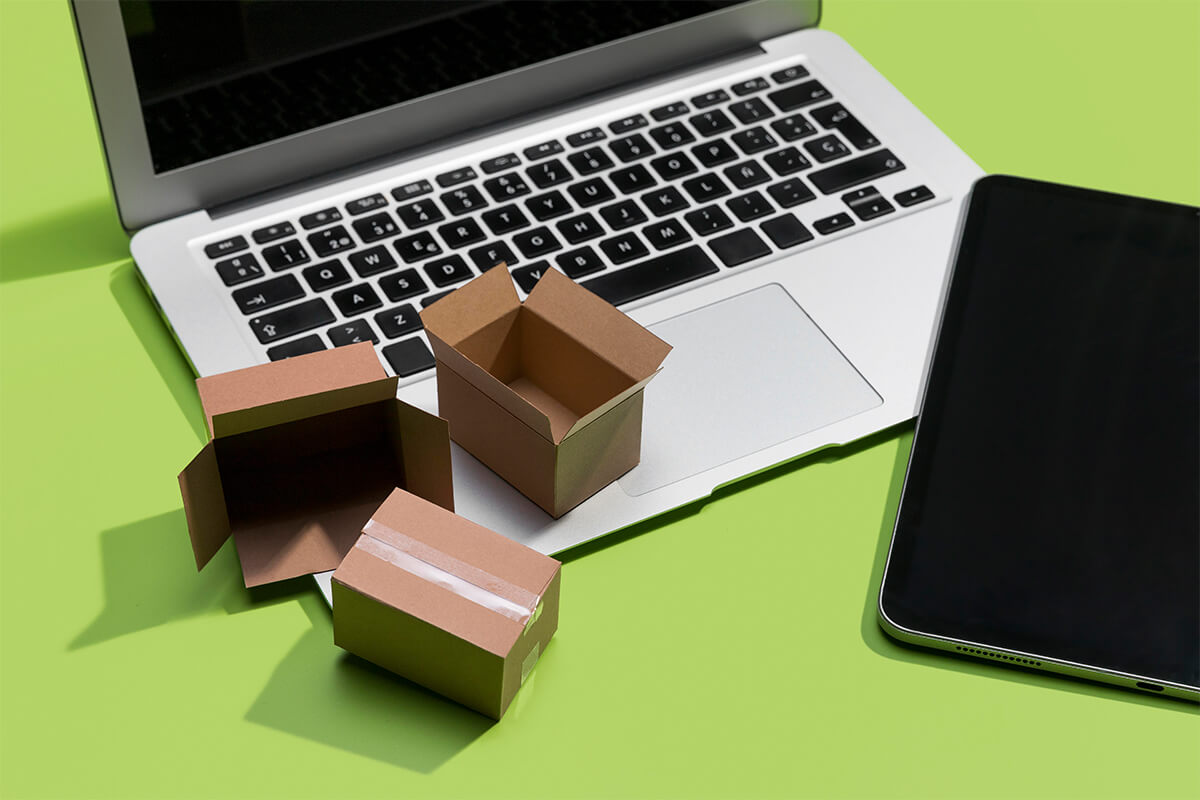Selling Ceramic Products Online: A Beginner's Guide (2025)
This guide provides a comprehensive roadmap for turning your passion into a profitable business by selling your handmade ceramics online, including proper planning, legal setup, professional presentation, and effective marketing steps.

Selling ceramic products onlineIt's one of the most effective ways to bring your handcrafted creations to a wider audience and transform your passion into a profitable business model. The endless possibilities offered by e-commerce in 2025 offer unique opportunities for ceramic artists and entrepreneurs.
However, achieving success in this competitive market requires taking the right steps and strategic planning. From who will buy your products to legal processes, from accurate pricing to effective marketing techniques, every detail is crucial.
This beginner's guide will take you step-by-step through how to sell your ceramics online, from the idea to your first sale. If you're ready, let's take the first step on this creative and profitable journey.
How to Sell Ceramic Products Online?
Successfully selling your ceramic products online is a strategic process that follows specific steps. Managing this process effectively is key to your brand's sustainable success. Here are the key steps you need to take:
Research Your Target Audience and Market

The foundation of every successful ecommerce venture is knowing who you're selling to. Instead of trying to sell your products to "everyone," focusing on a specific audience will make your marketing efforts much more effective.
Who is your target audience? Who will buy your products? Minimalists interested in home decor, those looking for unique gifts, or cafe owners looking for rustic tableware?
To find answers to these questions, research social media platforms (Instagram, Pinterest), decorating blogs, and relevant forums. Try to understand your customers' interests, demographics, and online shopping habits.
Market research also allows you to identify current ceramic trends (colors, shapes, textures) and potential gaps. Perhaps you can focus on a niche market that's lacking, such as personalized ceramic pet bowls.
Identify Your Competitors and Analyze Them in Detail
Once you understand your market and your customer, the next step is to understand the other players in the field. Competitor analysis is crucial for understanding what they're doing right and what they're doing wrong, and forging a unique path for your brand.
Start by searching online marketplaces (Trendyol, Hepsiburada, Etsy) and Google for keywords like "ceramic mug" or "handmade vase." You can also reach key competitors by following relevant hashtags on social media.
Examine your competitors' product lines, pricing strategies, and best-selling items. What styles (modern, bohemian, classic) do they offer? Where do their prices position themselves in the market?
Visit their website and social media accounts. What is the quality of their product photos? What language do they use to communicate with their customers? What marketing channels do they actively use?
Customer reviews and feedback provide the most valuable information. The issues customers complain most about (e.g., broken items, late shipping) can become opportunities for you. Their weaknesses can become your strengths.
The goal of this analysis isn't to copy, but to inspire and find that unique value that will differentiate your brand. What will set you apart from your competitors? Your unique designs, your superior packaging, or your story?
Choose the right company type for your business model and start your business
Selling products online regularly is a commercial activity and requires a legal basis. This is essential for invoicing, legally generating income, and using payment systems like virtual POS. It's strongly recommended that you consult a financial advisor before taking this step.
There are several popular options for those selling handmade items like ceramics in Turkey:
Tradesman Tax Exemption: If you manufacture your products at home without using industrial machinery, this is a great starting point. With a "Tradesman Tax Exemption Certificate" from the tax office, you'll be exempt from income tax as long as you don't exceed a certain annual revenue limit (this limit is updated annually). This model eliminates the need to establish a company.
Sole Proprietorship: This is the fastest and least expensive type of company. It's ideal if you're starting out on your own and want to keep things simple. As your income increases, so does your tax rate.
Limited Liability Company (LTD): If you're looking to take on partners or expand your business in the future, a Limited Liability Company offers a more corporate identity. In this structure, your personal assets are protected against company debts, and your liability is limited to the capital you invested.
Your choice will directly impact your startup costs, tax liabilities, and legal responsibilities. A financial advisor will be the best guide in determining the path that best suits your sales volume and future goals.
Plan Your Product and Category Hierarchy

Your online store is your digital storefront. Just like in a brick-and-mortar store, displaying your products in an organized and logical manner ensures customers can easily find what they're looking for. This is a user experience (UX) principle that directly impacts your sales.
A proper category structure tells not only customers but also search engines (SEO) what your site is about. This will increase your visibility on Google and simplify your inventory management in the future.
Start with the basics. List all the products you sell and divide them into main categories. Ask yourself: "If a customer came to my store, what main categories would they search for products under?"
For example, your main categories might be:
Kitchen Ceramics (Subcategories: Mugs, Plates, Bowls, Serving Items)
Decorative Ceramics (Subcategories: Vases, Wall Decorations, Candle Holders, Figurines)
Jewelry and Accessories (Subcategories: Necklaces, Earrings, Rings)
Next, plan attributes (tags) for customers to filter by, such as color, style (modern, rustic), collection, or purpose (gift, everyday use). For example, someone searching for "rustic mug in earthy tones" should find their destination quickly.
This structure is a roadmap you'll create when you start your business. You can always update and refine this hierarchy as your product line expands.
Get Your Products from Reliable Suppliers

The quality and availability of the products you sell are the backbone of your business. This is where your business model shapes the concept of "supplier." You'll either work with raw material suppliers for your own products or with artists and workshops for the finished products you sell.
If You Produce Your Own Products: Your reliability depends on the quality of the raw materials you use. The product standards, stock availability, and technical support of the supplier from whom you purchase ceramic clay, glaze, and other equipment are crucial. Test products from different brands to find the best fit for your needs.
If You Sell Other Artists' Merchandise: In this case, your suppliers are the artists and workshops you work with. Choose partners who offer high-quality, unique products that align with your brand identity. Establish transparent communication from the outset regarding production capacities, lead times, and terms of agreement (wholesale pricing, payment terms, etc.).
In either scenario, remember: A reliable supply chain directly impacts customer satisfaction. Selling an out-of-stock product or shipping a low-quality product will cause irreparable damage to your brand. That's why supplier selection is one of the most critical steps in your business.
Determine Competitive Pricing Strategies for Your Products

Pricing is one of the most strategic decisions you can make, reflecting the value of your ceramic products to customers and determining the profitability and sustainability of your business. You must strike the right balance not only to cover costs but also to position your brand and ensure your efforts are rewarded.
1. Flexible Startup Approach
The prices you set when starting out can serve as a test. After your first sales, analyze customer reactions, sales velocity, and feedback.
Perhaps one item is generating more interest than you anticipated, and you can raise its price slightly, or a small discount on another might stimulate sales. Remember, your prices may evolve over time.
2. Cost-Based Pricing
The most basic rule is to calculate all your costs. This is the first step to making a profit.
- Direct Costs: Electricity and tools used for clay, glaze, biscuit and glaze firing.
- Indirect Costs: Packaging materials (box, bubble wrap, gift note), marketplace commissions, shipping fees, marketing expenses, taxes.
- The Value of Your LaborThe most important thing is the value of the time you invest in this project. Set an hourly rate for yourself and be sure to factor that into the cost.
Formül basit: Toplam Maliyet + Kâr Marjı = Satış Fiyatı.
3. Sales Channel Compatible Pricing
Where you sell your product directly impacts your price. For example, marketplaces like Trendyol or Etsy can take a commission of 15%-30% on sales.
You need to factor this commission into the price. Since this cost isn't included on your own e-commerce site, you can offer a more competitive price or use this margin for perks like free shipping.
4. Defining Financial Goals
What are your expectations for your business? What is your target monthly turnover? Calculate how many products you need to sell and how much profit you need from each to achieve these goals.
This simple calculation will show you how realistic your pricing strategy and profit margin are.
5. Market Price Analysis
Use the research you conducted in the competitor analysis section here. What is the market price range for ceramic products of similar quality and style to yours?
Make sure your price isn't too high or too low for the market. If your price is high, you need to be able to communicate this to the customer (for example, superior quality, unique design, special packaging).
6. Observing Supply and Demand Dynamics
Not all of your products have the same value. For example, you might set a higher price for a model that takes a long time to make, is a one-off (unique), or is very popular than for your standard products.
Creating limited edition “special collections” is an effective way to increase demand and therefore the perceived value of the product.
Present your products with professional photos
When selling online, customers can't touch the product, hold it in their hands, or feel its weight. Therefore, your photos must be the "eyes, hands, and feel" of your product. High-quality photos inspire trust; poor or blurry photos can make even the most beautiful ceramics seem worthless.
You don't need a professional studio. Your best friend is soft, indirect sunlight from a window. Avoid direct sunlight, which creates harsh shadows, and camera flash, which destroys the texture of your product.
Aim for at least two types of photos for each product:
- Plain Background PhotosPhotos taken against a white or neutral background that clearly show all product details. These are often required for marketplaces.
- Lifestyle (Concept) PhotosPhotos that show the product in use. Display your ceramic mug with a coffee and book, and your vase on a shelf with fresh flowers. This helps the customer imagine the product in their own life.
One angle is never enough. Shoot your product from the front, side, top, and other angles. Don't hesitate to take close-ups (macro) that show off the ceramic's texture, the sheen of the glaze, or the small details that come with its handmade nature.
It's difficult to tell the size of a product in photos. It's helpful to include a frame that shows the scale, such as a mug you're holding. Also, make sure the color in the photos matches the actual product as closely as possible. Color variations are one of the most common reasons for returns.
Remember, today's smartphones can produce amazing results. Using a tripod to stabilize your phone and adjusting the brightness/contrast of your photos with a simple editing app will instantly improve the quality.
Obtain the Certificates and Permits Required to Sell Ceramic Products Online
As you enter the exciting world of e-commerce, meeting your legal obligations protects both you and your customers. These steps will help you build a solid foundation for your business and establish a trusted brand over the long term. It's important to seek the support of a financial advisor and lawyer during this process.
Business Registration and Tax Number
As we mentioned before, you must register officially by choosing a status such as a sole proprietorship, limited company or tradesman exemption.
If you establish a company, you'll receive a tax ID. If you obtain a Tradesman Exemption Certificate, this document becomes your official ID. This ID is required to apply to marketplaces and receive payments.
Product and Permit Requirements
Decorative ceramics generally don't require a special permit. However, if the products you sell will come into contact with food (such as mugs, plates, or bowls), it's critical that the glazes and clay you use are food-safe.
Requesting documentation confirming this compliance from your suppliers and including this information in your product descriptions increases customer confidence.
Business License and Local Government Permits
If you produce from your home and are subject to the tradesman exemption, you generally do not need an additional business license.
However, if you are planning to open a separate workshop or shop, you must obtain a “Business Opening and Operation License” from the municipality you are affiliated with.
Distance Sales Agreement and Return Policy
It is a legal obligation for every business selling online to have an easily accessible “Distance Sales Contract” and “Preliminary Information Form” on its website.
Additionally, you must clearly explain your 14-day right of withdrawal and your return policy, which you are required to offer your customers under the Consumer Protection Law. It's best to consult a lawyer for these documents.
Invoice and Tax Regulations
If you are a company owner, you must issue an e-invoice or e-archive invoice to your customers for every sale you make.
If you fall under the tradesman exemption, you are not obligated to issue invoices; the recipient (marketplaces, etc.) will issue an "expense slip" on your behalf. You should manage all these processes with your financial advisor.
Personal Data Protection and KVKK Compliance
You are responsible for protecting the personal data you receive from your customers, such as their name, address, and phone number. In accordance with Law No. 6698 on the Protection of Personal Data (KVKK), you must publish a "Disclosure Statement" and "Privacy Policy" on your website. This compliance is vital to your brand's credibility.
Choose the Platform to Sell Ceramic Products Online
Once all the preparations are complete, it's time for one of the most exciting steps: Where will you present your products to customers?
There are two main options when making this decision: opening your own branded store (e-commerce site) or renting a section in a large shopping mall with existing customer traffic (marketplace). Often, the best strategy is a combination of both.
Create Your Own E-Commerce Site
This is your brand's digital home. You can create your own ".com" website using ready-made e-commerce platforms like Shopify, WooCommerce (WordPress), or Ikas and Ticimax in Turkey.
Advantages: You have full control over your brand identity and customer experience. Because there are no marketplace commissions, your profit margins are higher. Because you own customer data, you can conduct direct marketing.
Disadvantages: The responsibility for attracting customers to your site rests entirely with you. This requires additional time and budget for SEO (Search Engine Optimization), digital advertising, and social media marketing.
List Your Products on Online Marketplaces
This option is to sell your products on platforms that are already visited by millions of people, such as Trendyol, Hepsiburada or Etsy.
Advantages: You gain access to a ready-made traffic network of millions of potential customers. The credibility of major brands makes purchasing decisions easier for customers. It's technically easier to get started.
Disadvantages: You'll pay high commissions of 15% to 30% on every product you sell. Because you're displayed alongside hundreds of similar products, competition is fierce. It's harder to stand out from your brand and build customer loyalty.
Leading Marketplaces Where You Can Sell Your Ceramic Products
The choice of marketplace depends on your target audience and the style of your products:
Etsy: A global marketplace for handmade, vintage, and unique items. It's the ideal platform for niche ceramics, especially those with high artistic value. It's a great gateway to selling internationally.
Trendyol and Hepsiburada: These are Turkey's largest marketplaces. They're effective at reaching a wide audience, but commission rates and competition are high. They're suitable for all types of ceramics, from decorative items to kitchenware.
Amazon Handmade: Amazon's dedicated section for handmade goods. It's a powerful alternative for selling using the infrastructure and logistics network of a global giant.
Instagram and Facebook Shops: Allow you to sell directly through your social media accounts. Perfect for one-on-one customer communication and telling the story of your products.
Conduct Marketing Efforts to Promote Your Products and Brand
Even if you produce the world's most beautiful ceramics, you can't sell anything if no one knows about it. Marketing is your way of telling potential customers, "Hello, I'm here and I have great products!" Here are some modern and traditional methods you can use to promote your brand and products.
- Run Digital Advertising Campaigns
With Meta (Facebook and Instagram) Ads, you can put your products directly into the feed of people interested in decoration, crafts or gifts.
By starting with a small budget, you can test which images and text work best. Google Ads allow you to directly reach potential buyers searching for things like "handmade ceramic mug."
- Optimize SEO for Your E-Commerce Site
This is the most effective, long-term way to acquire customers organically, meaning free of charge. If you have your own e-commerce site, use keywords customers are likely to search for, such as "hand-painted ceramic plate" or "rustic coffee cup," in your product titles and descriptions. Writing blog posts on topics like "How to Care for Ceramics" is also a great SEO tactic to drive valuable traffic to your site.
- Increase Your Brand Awareness with Influencer Collaborations
Partner with influencers focused on decor, lifestyle, or art who resonate with your target audience. Instead of accounts with large followings, smaller but highly engaged "micro-influencers" often deliver more genuine and budget-friendly results.
You can have them promote your products to their audience in exchange for product shipping (barter) or a small fee.
- Strengthen Customer Engagement with Email and SMS Marketing
These channels are the cheapest way to retain and resell your existing customers. Send special discounts, news about new collections, or stories from your workshop to people who shop on your site or sign up for your newsletter. By building a connection with your customers, you can turn them into loyal fans.
- Reach Local Customers with Traditional Marketing Methods
The digital world isn't everything. Showcase your products in person by attending local design markets, craft fairs, or local events. You can partner with popular cafes or boutique hotels in your area to display or sell your products at their locations (consignment sales). This provides great local visibility for your brand.
Complete Cargo, Logistics and Virtual POS Agreements
Congratulations on selling your product! But your work isn't over. Now you need to deliver that precious ceramic to your customer in one piece and collect payment seamlessly. These operational steps are key to customer satisfaction.
Cargo and Logistics: For fragile items like ceramics, the shipping process is the riskiest. Establish corporate agreements with companies like MNG, Yurtiçi, and Aras Kargo, or with companies that offer specialized logistics services for e-commerce (e.g., Kargoist, Sendeo).
Corporate agreements significantly reduce your costs, offering discounts of up to 50% compared to individual shipments. Compare prices based on decimal weight (by volumetric weight) from different companies.
Packaging Art: Packaging is an area where no expense should be spared. One of the safest methods is the "box within a box" technique. Wrap the product generously in bubble wrap and place it in a small box, then place this box inside a larger shipping box, ensuring there's no space around it.
Never forget to put large, eye-catching "Fragile" labels on your package. Your package is also a part of your brand experience; adding a small thank-you note makes a great impact.
Virtual POS (Payment Infrastructure): To accept credit card payments through your own e-commerce site, you need a virtual POS service. Instead of dealing with individual banks, the most practical approach is to work with BRSA-licensed payment institutions like Iyzico and PayTR.
These companies allow you to accept payments from all bank cards with a single integration, are easy to set up, and typically operate on a per-transaction commission model. If you only sell on marketplaces, the marketplace manages the payment infrastructure for you.
Manage Your Customer Communication Channels Effectively
A sale isn't just the exchange of a product; it's the beginning of a relationship. Especially for a brand selling handmade products, communication with your customers is the most important factor that distinguishes you from large, faceless brands. Good communication can turn a one-time customer into a loyal fan.
Be Fast and Friendly: Customers expect prompt responses to their questions and concerns. Respond promptly to messages, especially those received through social media (Instagram DMs, Facebook comments), with friendly and helpful language. Remember, an unanswered question can mean a missed sale.
Offer Different Channels: Offer your customers different ways to reach you. Email is ideal for more formal and detailed conversations. A WhatsApp Business account is a great option for fast, instant support. If you have your own e-commerce site, adding a live chat module can be very effective in convincing undecided customers.
Be Transparent and Solution-Focused: Did an error occur? Was the shipment delayed? Is the product out of stock? Never hide the situation. Be honest and transparent with your customer, and do everything you can to resolve the issue. A solution presented with empathy can turn even the most irritated customer into a brand advocate.
Did an error occur? Was the shipment delayed? Is the product out of stock? Never hide the situation. Be honest and transparent with your customer, and do everything you can to resolve the issue. A solution presented with empathy can turn even the most irritated customer into a brand advocate.
Improve Your Business by Evaluating Customer Feedback
You've launched your business, started making sales, and are communicating with your customers. The process doesn't end there; in fact, the most important part begins now: continuous learning and development. Your customers are your most valuable and unpaid advisors who will shape the future of your business.
Where and How Should You Listen?:
Product ReviewsStarred reviews left for your e-commerce site or marketplace store are your clearest report card. 5-star reviews show what you're doing right, while low-rated reviews show what needs to be fixed urgently.
Social Media Interactions: A statement like “I wish this model was in green” in comments and messages is an invaluable source of inspiration for your next collection.
Direct Communication: Every question and complaint you receive via email or text is data. Are you repeatedly receiving questions about the same issue? This means there's a flaw in your product description. Are there recurring complaints about your packaging? This means you urgently need to improve your packaging.
Keep track of this feedback regularly in an Excel spreadsheet or notebook. Review these notes periodically to continually improve your products, services, and processes.
Conclusion
Selling ceramic products online isn't a single-step process; it requires patience and strategy. In this guide, we've covered the fundamental steps to turning an idea into a profitable business: from finding the right market to completing the legal process, from presenting your products to reaching your customers, every step plays a role in your success.
Remember, this process is just like ceramic art itself. In the beginning, there's a little clay (the idea), the right techniques (the strategy), patient waiting (the production and marketing), and finally, a unique work of art (your brand). Every great brand is built on these small, dedicated steps.
Now you have the necessary knowledge and roadmap. Just as you shape clay, you have the power to shape your own success story by combining your passion and creativity. Be brave, take the first step, and bring your art to the world.
FAQ
1. Do I have to establish a company immediately to sell ceramic products?
No, you don't have to immediately. If you manufacture your products at home without using industrial machinery, you can apply to the tax office and obtain a Tradesman Tax Exemption Certificate. With this certificate, you'll be exempt from income tax as long as you don't exceed a certain annual turnover limit, eliminating the need to establish a company. This is the ideal and least expensive way to get started.
2. How do I package my ceramic products so that they do not break during shipment?
This is the most critical issue for ceramic sellers. The golden rule is the "box within a box" method.
First, wrap your product with plenty of bubble wrap or paper padding.
Place the wrapped product in a small box where it will not move.
Place this first box in the center of a larger, sturdier shipping box, again using padding around it.
Be sure to put large and eye-catching “Fragile” labels on your parcel.
3. How should I determine the price of a cup or plate in the simplest way?
En temel formül şudur: (Tüm Maliyetler + Emeğinizin Değeri) + Kâr Payı = Satış Fiyatı.
Costs: Calculate all your expenses per product, such as clay, glaze, kiln electricity, packaging material, shipping, marketplace commission.
Value Your Labor: Set an hourly rate for the time you spent making the product and add that to the cost. This is the most important step.
Profit Margin: Add to this total how much profit you want to make to maintain and grow your business.
4. Should I create my own e-commerce site or start on marketplaces like Trendyol/Etsy?
The best strategy is usually to combine the two, but to start:
Marketplaces (Etsy, Trendyol, etc.): Great for getting a quick start and seeing your first sales thanks to ready-made customer traffic.
Your Own Website: Building your brand identity long-term is crucial for building customer loyalty and achieving higher profit margins by avoiding commissions. Recommendation: You can start selling on marketplaces and gradually build your own website.
5. Can I sell my products abroad?
Absolutely! Etsy is the most popular and convenient platform for selling your handmade goods internationally. Selling internationally requires accurately calculating international shipping costs, completing simple customs declaration forms (usually assisted by the shipping company), and receiving payments in foreign currency. While it may seem daunting at first, it's a process thousands of sellers have successfully completed.
-
 worgoo
worgoo
